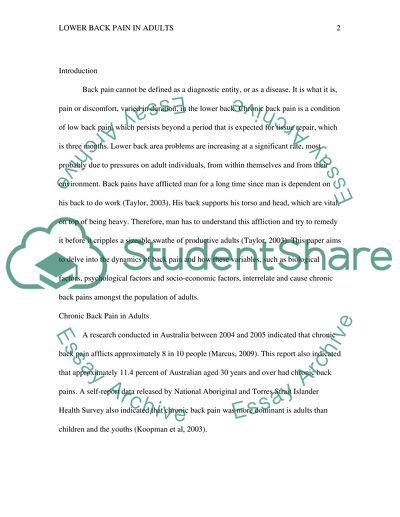Cite this document
(The Dynamics of Back Pain Essay Example | Topics and Well Written Essays - 1250 words, n.d.)
The Dynamics of Back Pain Essay Example | Topics and Well Written Essays - 1250 words. https://studentshare.org/health-sciences-medicine/1446568-the-dynamics-of-back-pain
The Dynamics of Back Pain Essay Example | Topics and Well Written Essays - 1250 words. https://studentshare.org/health-sciences-medicine/1446568-the-dynamics-of-back-pain
(The Dynamics of Back Pain Essay Example | Topics and Well Written Essays - 1250 Words)
The Dynamics of Back Pain Essay Example | Topics and Well Written Essays - 1250 Words. https://studentshare.org/health-sciences-medicine/1446568-the-dynamics-of-back-pain.
The Dynamics of Back Pain Essay Example | Topics and Well Written Essays - 1250 Words. https://studentshare.org/health-sciences-medicine/1446568-the-dynamics-of-back-pain.
“The Dynamics of Back Pain Essay Example | Topics and Well Written Essays - 1250 Words”. https://studentshare.org/health-sciences-medicine/1446568-the-dynamics-of-back-pain.


